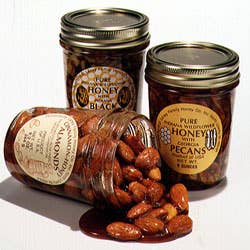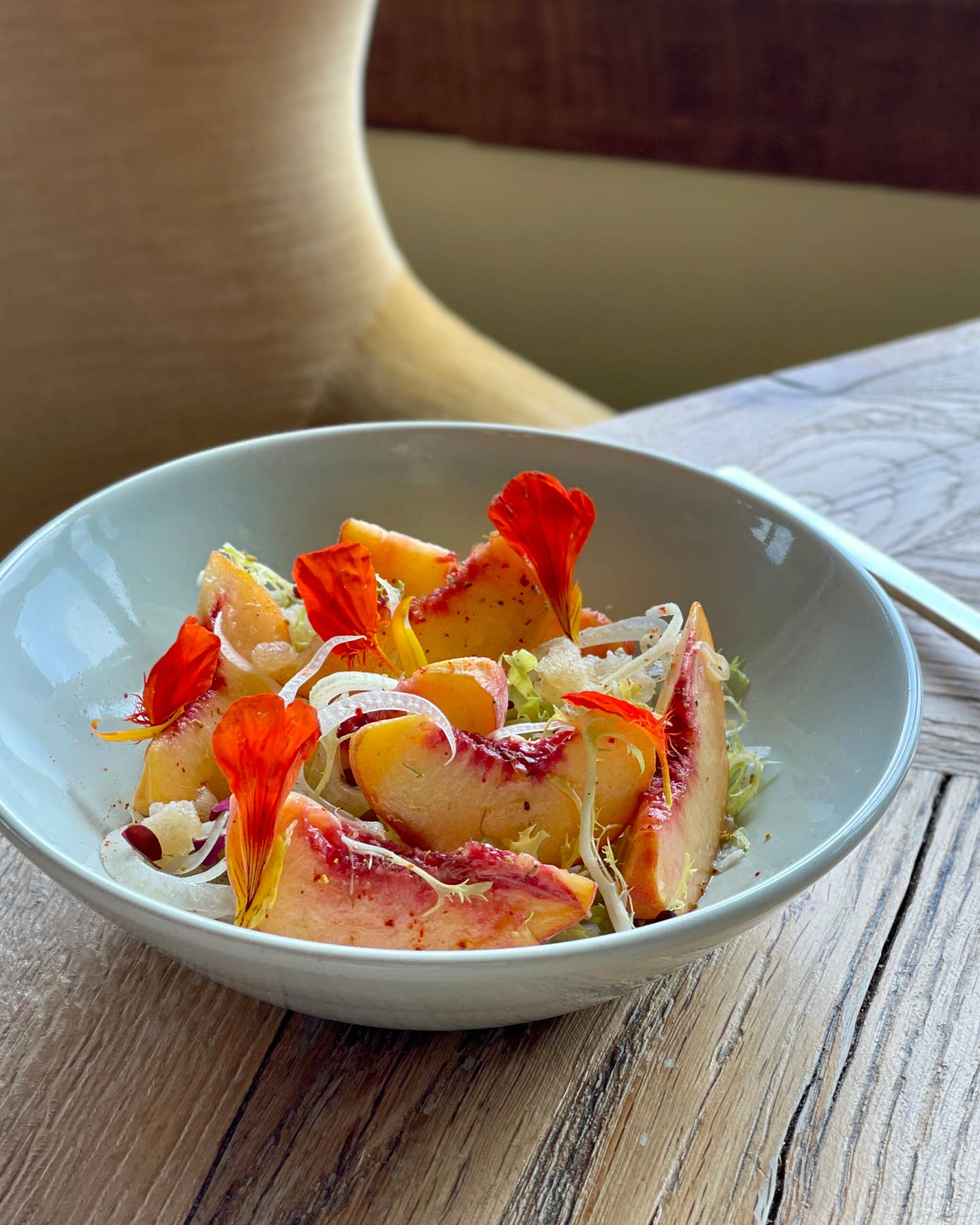
Honey is an ancient substance, truly as old as the birds and the bees, and it has a quaint image—helped along by Winnie-the-Pooh and that nursery rhyme about the queen eating bread and honey in the parlor. People seem to like it, but there is, shall we say, not a lot of contemporary buzz about it.
Nearly all large honey producers in this country today sell a uniform, blended product that has been filtered and heated to high temperatures to prevent granulation and to extend shelf life—a process that inevitably kills some flavor.
Luckily, there are still some small producers who don't overheat, and who specialize in "source-flavored" honey—honey made from the nectar of assorted wildflowers or of individual varieties of flowers, blossoming shrubs, or trees. Beekeepers must keep careful track of what blooms when, but the result—unusual, distinctive-tasting honeys, like orange blossom, clover, acacia—is their reward.
Dave and Kay Laney and their son and daughter, Tom and Linda, have spent many years building up their farm-based Laney Family Honey Company in North Liberty, Indiana, near the Michigan border. They keep about 100 colonies of bees on or near their 32-acre farm, and buy additional honey from like-minded, quality-conscious beekeepers nearby. The Laneys bottle nine unique Midwestern honeys, including cranberry blossom, basswood (from the early-summer blossoms of linden trees), and trefoil (from the midsummer flowers of bird's-foot trefoil). But it's the luscious mixtures of their wildflower honey and nuts that we love best.
The preservative qualities of honey have been known for centuries. The ancient Egyptians soaked the wrappings of mummies in honey, and Alexander the Great ordered that his body be embalmed in it—and since medieval times, it has been used to keep foods from spoiling, either by adding it to the recipe or by coating food with it. Honey is still used to preserve fruits and especially nuts. Consider pasteli, the Greek sesame candy, or baklava, the walnut or pistachio confection common to many Middle Eastern countries—both of which can last a long time, thanks to honey.
The Laneys' nuts would probably have a long shelf life, too, if they didn't vanish so quickly because they're so good to eat. The family packs half-pint glass jars with Indiana black walnut pieces, Georgia pecan halves, or whole almonds, then pours in local wildflower honey (adding cinnamon to the almond version). They chose wildflower honey because of its mild flavor, which doesn't detract from the flavor of the nuts. In fact, it seems to heighten it. Suspended in amber, the nutmeats are lovely to behold, and even lovelier to sample.
This concept of nuts in honey is simple yet ambrosial. The Laneys execute it well, and have us seeing honey in a whole new way.
The sweetened nuts are irresistible spooned right from the jar, and that's the way most customers eat them, the Laneys report—though they also make fine toppings for ice cream, pancakes, or buttered toast or bagels. We transformed a dull dish of oatmeal into a sensational, crunchy-sweet breakfast. Linda Laney says that some people spread the toppings over homemade coffee-cake dough to create a baked-on, glazed-nut topping.
Keep Reading
Continue to Next Story










